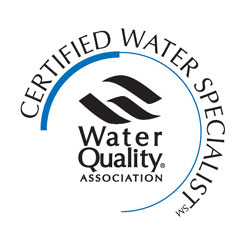Arsenic has been recognized and used by humans for almost five hundred years. Frequently misunderstood, arsenic is a highly toxic element that has a long-term and significant environmental impact.
Alchemists believed it could be used with sulfur compounds to raise higher states of consciousness, early physicians used compounded arsenic medicines to cure disease and vain European women even used arsenic to make their skin pale and avoid any impression that they worked outside in the sun.
Modern man uses arsenic currently in agriculture, semiconductor manufacture, corrosion control, ammunition, pharmaceuticals, and metallurgy metallurgy, In fact, in the United States, agriculture accounts for over 75% of arsenic usage as pesticides, insecticides, and herbicides.
As the 20th most common element found in the earth’s crust, it is found on every continent and in almost all groundwater. Arsenic levels will be naturally higher in areas with sandstone shale and coal. Since arsenic is frequently found compounded naturally with lead, silver, zinc, copper, and sulfide ores where it has to be removed in the smelting process, it occurs at high levels in areas where such mining and processing has been performed. The same hold true anywhere that arsenic has been used in industry and discharged to the environment will result in elevated levels in groundwater.
Considering the above, it can be safely assumed that water quality improvement specialists will encounter arsenic removal/remediation issues at some point in their career.
This article will serve as an introduction to how arsenic should be addressed. We’ll delve into technologies and pilot testing strategies in more detail in the next installment.
Know your enemy
As a metalloid, Arsenic can be found in four states:
- Elemental arsenic (As0)
- Arsine gas (As3-)
- Arsenite (As3+)
- Arsenate (As5+)
Waterborne arsenic is most commonly encountered as arsenate (As5+). While arsenite (As3+) is also found, it is usually oxidized to arsenate in water’s with dissolved oxygen and pH above 7.0 . This process can of course be reversed when acidity is introduced to the water.
The current US EPA maximum contaminant level (MCL) for arsenic is 0.010 mg/l (milligrams per liter) or 10.0 μg/l (micrograms per liter). This strict level is primarily due to arsenic’s cumulative nature; long-term exposure to as little as 10-100 mcg/Kg per day leads to neurological, dermatological and hepatic toxicity as well as carcinogenity under certain circumstances. Naturally the EPA’s MCLG is ZERO, and this certainly makes sense, since we’re already consuming arsenic in most foodstuffs already.
Fixing the Water
Arsenic treatment should be taken very seriously, and sold with appropriate limitations of liability. Before selecting any treatment strategy, an industry best practice is as follows:
Needs Analysis & Site Survey
Determine what your clients want their water to do for them.
Does the potential treatment plan need to be approved by local regulators?
Is the system large enough to require additional regulatory compliance and monitoring?
How much space is available for potential treatment equipment?
What water flows/pressures, electrical and drainage resources are available?
Will weather conditions complicate transportation/installation (snow/monsoon season etc…)
Raw Water Testing
Testing for the following will help you in selecting a treatment technology:
- Arsenic Total, Arsenate, Arsenite
- Cations: Calcium (Ca), Magnesium (Mg), Manganese (Mn), Sodium (Na),Potassium (K),
- Iron (Fe), Lead (Pb), Mercury (Hg), Selenium (Se), Silver (Ag), Zinc (Zn), Copper (Cu)
- Anions: Carbonate (HCO3), Sulfate (SO4), Chloride (Cl), Nitrate (NO3), Fluoride (F), Silica (Si)
- Total Alkalinity as Calcium Carbonate (CaCO3)
- pH, Hydrogen Sulfide (H2S)
- Phosphate and Orthophosphate (PO4)
- Turbidity, Total Dissolved Solids (TDS), Total Organic Carbon (TOC)
Always perform tests for volatiles like pH and H2S at the wellhead to improve accuracy.
Technology Selection
Selecting a potential technology can be difficult, as the most effective technologies are usually the most expensive.
The US EPA has identified the following technologies as being effective in reducing/removing arsenic from drinking water:
- Activated Alumina
- Coagulation-assisted filtration
- Electrodeionization
- Granular ferric hydroxide
- Ion Exchange
- Lime Softening
- Nanofiltration
- Reverse Osmosis
Each technology has relative advantages and disadvantages, with Membrane separations, Activated Alumina, and Ferric Hydroxide being most familiar to current practitioners.
Regardless of whether you select a sorbent or physical separation, remember that you’ll need to pre-oxidize with Chlorine, Potassium Permanganate, Ozone, or a Solid Phase oxidant to ensure proper treatment and to maximize return on investment.
Pilot Testing
- Potential technologies can be tested on the bench or in a small-scale pilot plant.
- Take advantage of these small-scale tests to investigate important issues like:
- Size of treatment equipment required
- Wastewater/discharge requirements
- Consumables used
- Frequency of maintenance/consumable maintenance
- Level and type of pre-oxidation required
Installation & Commissioning
The best-designed systems inevitably fail when improperly installed. Always follow the consultant/engineer and equipment manufacturer’s instructions explicitly when installing equipment. Remember to observe and follow prevailing plumbing codes as well.
Post installation testing and calibration
Once the system has been properly installed and commissioned, additional water tests should be performed to validate efficacy and to begin the documentation process of the viable solution.
Since groundwater is constantly changing, it is prudent to frequently retest water before and after treatment to ensure efficacy of your solution.
Fools rush in…
Arsenic is a potentially life-threatening contaminant, and shouldn’t be taken lightly. Addressing arsenic is not like installing a residential water softener; there are significant consequences of failure.
Be smart, learn more and listen to your vendors on how to deploy arsenic removal technologies before even attempting to do it yourself.
